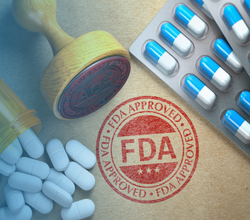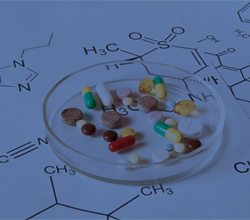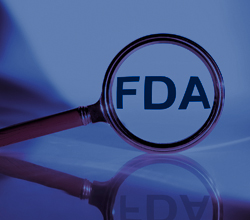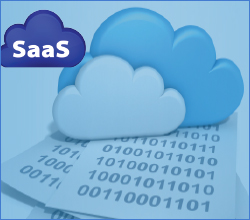
Social Media Compliance for Fair Lending: What to post and what not to
 Justin Muscolino
Justin Muscolino
 60 Min
60 Min
Product Id: 706987
Ensure compliance in your social media marketing efforts with our "Social Media Compliance for Fair Lending" training. Learn what content is permissible and what's not to avoid potential regulatory issues. This course covers guidelines for posting on various social media platforms while adhering to fair lending laws. Gain insights into creating compliant content that promotes transparency and fairness in your lending practices. Equip your team with the knowledge needed to navigate the complexities of social media compliance, mitigate risks, and maintain regulatory adherence in your digital marketing strategies.

Human Error Investigations, Root Cause Determination and CAPA Effectiveness
 Ginette M Collazo
Ginette M Collazo
 90 Mins
90 Mins
Product Id: 704314
This training program will offer attendees an understanding of human error, its factors and causes. The program will also identify the regulatory and business importance of human error prevention and define the process to manage human error deviations.

Applied Time Series Analysis in Healthcare
 Elaine Eisenbeisz
Elaine Eisenbeisz
 4 Hrs
4 Hrs
Product Id: 706758
This 4-hour webinar will provide attendees with the theory and application of time series analysis. The main focus will be on auto regressive integrated moving average (ARIMA) techniques. Variations of the ARIMA and other models which operate under non-linear data, non-stationary data, seasonality, and trends will also be examined.

Computer System Validation (CSV) vs. Computer System Assurance (CSA): Aligning the Agile Methodology to the GAMP®5 "V" Model and System Development Life Cycle (SDLC) Methodology
 Carolyn Troiano
Carolyn Troiano
 120 Mins
120 Mins
Product Id: 706921
As part of the Case for Quality program US FDA Center for Devices and Radiological Health noted how an excessive focus by industry on compliance rather than quality may be diverting resources and management attention toward meeting regulatory compliance requirements vs. adopting best quality practices. There has also been a lower than anticipated investment in automation and digital technologies, which could greatly improve quality and process control. A key element is a risk-based, product quality and patient-centric approach to Computer System Assurance (CSA) vs. the traditional Computer System Validation (CSV) waterfall approach. This encourages critical thinking based on product and process knowledge and quality risk management over prescriptive documentation driven approaches.
This is where FDA determined that “WHAT” is required can be done (the “HOW”) in different ways and does not have to be according to the “checklist” mindset of most CSV work, where you create documents without specifically addressing the risk of potential failure of each requirement.
GAMP®5 supports the use of incremental, iterative, and evolutionary approaches including agile, for development of custom applications. Keys to success include a robust Quality Management System and well trained and highly disciplined teams following well-defined processes supported by tools and automation.

Tier II, Form R, and SPCC Reporting: Environmental Compliance Made Simple
 Joe Keenan
Joe Keenan
 90 Mins
90 Mins
Product Id: 705581
This webinar will help attendees to learn SPCC Implementation Plan Best Practices. The US EPA requires an SPCC Plan to be prepared by companies that use certain petroleum-based chemicals and Oils.

Quality Agreements and Their Role as Part of a Quality System
 Michael Ferrante
Michael Ferrante
 90 Mins
90 Mins
Product Id: 706966
This webinar will focus on the Process for Quality Agreements and requirements that must be implemented to ensure compliance with the latest quality and regulatory requirements. Attendees will learn the reason for implementing a Quality Agreement system to assure adequate controls for Service Providers.

FDA's New Software Validation Requirements
 John E Lincoln
John E Lincoln
 90 Mins
90 Mins
Product Id: 706952
CGMP companies must develop / implement formal software V&V for medical product under IEC 62304 and a key US FDA Guidance Document.

Mapping and Review of Pharmaceutical Warehousing and Distribution Workflows
 Michael Esposito
Michael Esposito
 90 Mins
90 Mins
Product Id: 707026
Mapping and evaluating all the steps in a pharmaceutical warehousing and distribution workflow can lead to valuable process improvements. In this webinar, we discuss how this review can be accomplished and the possible benefits that can result.

OSHA Inspection Readiness: What to Expect and How to Prepare
 Joe Keenan
Joe Keenan
 60 Min
60 Min
Product Id: 705368
Regulatory compliance audits can be taxing and worrisome for anyone. Having an OSHA, EPA or State Department of Environmental Quality Audit can open an organization up to receiving regulatory citations, monetary fines, negative company press, etc. The purpose of this webinar is to cover the key concepts of how to successfully navigate through a OSHA Audit.

Good Documentation Practice (GDP) and FDA Validation Compliance for Regulated Computer Systems and Data
 Carolyn Troiano
Carolyn Troiano
 90 Mins
90 Mins
Product Id: 706925
Computer system validation has been regulated by FDA for more than 30 years, as it relates to systems used in the manufacturing, testing and distribution of a product in the pharmaceutical, biotechnology, medical device or other FDA-regulated industries. The FDA requirements ensure thorough planning, implementation, integration, testing and management of computer systems used to collect, analyze and/or report data. Electronic records and electronic signatures (ER/ES) came into play through guidelines established by FDA in 1997, and disseminated through 21 CFR Part 11. This code describes the basic requirements for validating and documenting ER/ES capability in systems used in an FDA-regulated environment.

Analytical Method Validation and Transfer
 Kelly Thomas
Kelly Thomas
 90 Mins
90 Mins
Product Id: 706186
This course will provide a thorough review of regulatory guidelines on method validation and transfer. It provides guidance on how to perform QC analytical test method validations and transfers.

Conducting Effective Quality Audits: Beyond Audit Checklists
 Michael Ferrante
Michael Ferrante
 60 Mins
60 Mins
Product Id: 703539
This webinar will teach attendees best practices for conducting effective quality audits to ensure regulatory compliance. Learn how to avoid potential pitfalls during the audit process.

NEW Nacha Operating Rules Changes for 2024, 2025 & 2026 PLUS Ops Bulletin #1-2025
 Donna K Olheiser
Donna K Olheiser
 90 Mins
90 Mins
Product Id: 707025
Effective Oct 1, 2024 – Amendments to the Rules included Risk Management Topics, such as "Expanded use of Return Reason Code R17"; "funds availability exceptions" and "Unauthorized Return changes for the RDFI with timing of the WSUD and returning unauthorized transactions".
Effective April 1, 2025 – An Amendment carried over from 2024 includes the "Expanded use of Return Reason Code R06"
Effective March 20, 2026, two Rule amendments (Fraud Monitoring – Phase 1) – monitoring for Faud (as part of a larger Risk Management package) intended to reduce the incidence of successful fraud attempts and improve the recovery of funds after frauds have occurred.
Plus, two additional Rule amendments on standardizing Company Entry Descriptions (also part of Risk Management-relating to Fraud) become effective on March 20, 2026.

Managing Microbiological Out of Specification (OOS) and Out of Trend (OOT) Results in Sterile and Non-Sterile Production FDA & ICH Expectations and Guidance
 Barry A Friedman
Barry A Friedman
 90 Mins
90 Mins
Product Id: 706884
The objective of this interactive, live training webinar is to explore the management of OOS practices and suggested avenues to take to minimize deviations, OOT, OOS and CAPA and how to attack these situations should they occur. It is also designed to determine how FDA and ICH regulations and guidances may impact them. It will also reference the new PDA TR 88, “Microbial Data Deviation Investigations in the Pharmaceutical Industry”.

21 CFR Part 11, FDA’s Guidance for Electronic Records and Electronic Signatures
 Carolyn Troiano
Carolyn Troiano
 90 Mins
90 Mins
Product Id: 707014
The Webinar will focus on the importance of ensuring that electronic record/electronic signature (ER/ES) capability built into FDA-regulated computer systems meets compliance with 21 CFR Part 11. This includes development of a company philosophy and approach, and incorporating it into the overall computer system validation program and plans for individual systems that have this capability.

Conducting an ACH Risk Assessment and Developing an Effective Risk Management Program
 Donna K Olheiser
Donna K Olheiser
 90 Min
90 Min
Product Id: 706995
According to the Nacha Operating Rules, financial institutions are required to assess and manage all ACH risks, which includes developing a Risk Management program. Most ACH risk can be mitigated through proper due diligence for all originating customers (KYC) and strict adherence to ACH origination and credit policies, which includes monitoring ACH activity.

Ethylene Oxide and Gamma Radiation Sterilization Validations
 John E Lincoln
John E Lincoln
 90 Mins
90 Mins
Product Id: 707018
Gamma and EO Sterilization verification and validations under the U.S. FDA and EU's EMA / MDR requirements

Fair Lending in 2025: new regulations, examinations and enforcement
 Justin Muscolino
Justin Muscolino
 60 Mins
60 Mins
Product Id: 707017
Are you as knowledgeable in the Fair Lending regulations? Do you know how they pertain to your role and responsibilities? Has your compliance program changed with the changes in regulations? During this webinar we will go through each of the regulations that fall under Fair Lending and take look at the latest developments in regulatory compliance.

Stability Studies and Estimating Shelf Life
 Steven Wachs
Steven Wachs
 90 Mins
90 Mins
Product Id: 706026
The webinar will provide useful methods and techniques for conducting a stability study and analyzing the resulting data for the purpose of estimating shelf life. Participants should be able to immediately apply the methods presented. Also, the interpretation and communication of results will be stressed and illustrated in several examples.

Effective Systems for Change Control in the Pharmaceutical Industry
 David L Chesney
David L Chesney
 90 mins
90 mins
Product Id: 705002
This webinar will help you understand GMP requirements for change control from a pharmaceutical manufacturing perspective, the purpose of change control and what types of changes are or are not subject to change control. Participants will learn how to execute and implement a change in a regulated environment.


























